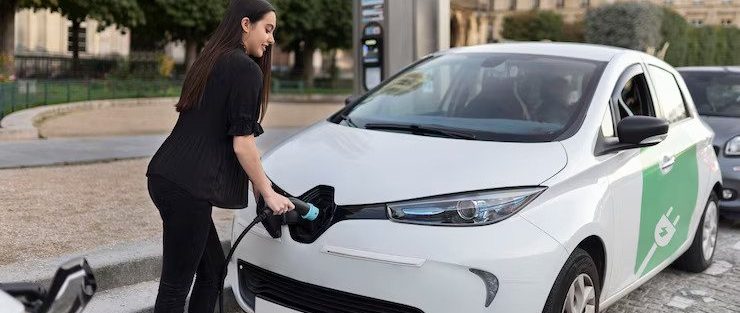Pollution-free vehicles, also known as zero-emission vehicles (ZEVs), are vehicles that produce no tailpipe emissions during operation. These vehicles offer significant environmental benefits by reducing air pollution, greenhouse gas emissions, and dependence on fossil fuels. Here are some types of pollution-free vehicles:
Electric Vehicles (EVs): Electric vehicles run entirely on electricity stored in batteries and produce zero tailpipe emissions. They are powered by electric motors and have no internal combustion engines. EVs can be charged from the electric grid and offer a range of options, from compact cars to SUVs and even trucks. They significantly reduce air pollution and greenhouse gas emissions when charged with renewable energy sources.
Hybrid Electric Vehicles (HEVs): Hybrid electric vehicles combine an internal combustion engine with an electric motor and battery system. HEVs use regenerative braking to recharge the battery, and the electric motor assists the engine during acceleration and low-speed driving. While HEVs still use fossil fuels, their electric components help reduce fuel consumption and emissions compared to conventional vehicles.
Plug-in Hybrid Electric Vehicles (PHEVs): Plug-in hybrid electric vehicles are similar to HEVs but offer a larger battery capacity that can be recharged by plugging into an electrical outlet or charging station. PHEVs can operate in all-electric mode for a certain distance before the internal combustion engine takes over. By utilizing electricity from the grid, PHEVs can significantly reduce tailpipe emissions and achieve greater fuel efficiency.
Fuel Cell Vehicles (FCVs): Fuel cell vehicles use hydrogen as a fuel source to generate electricity through a chemical reaction in a fuel cell stack. The electricity then powers an electric motor to propel the vehicle, emitting only water vapor as a byproduct. FCVs have the advantage of fast refueling times and longer driving ranges compared to battery electric vehicles. However, the production and distribution of hydrogen for fuel cells currently face challenges.
Solar-Powered Vehicles: Solar-powered vehicles utilize solar panels to capture sunlight and convert it into electricity to power the vehicle. These vehicles often integrate solar panels on their roofs or bodies to supplement the battery charging and extend the driving range. While solar power alone may not be sufficient to meet all energy needs for a vehicle, it can help reduce reliance on grid electricity and provide sustainable charging.
Human-Powered Vehicles: Human-powered vehicles, such as bicycles and electric bicycles (e-bikes), rely entirely on human effort or a combination of human pedaling and electric motor assistance. These vehicles produce no tailpipe emissions and have minimal environmental impact. E-bikes, in particular, have gained popularity as a clean and efficient mode of transportation for short to moderate distances.
The widespread adoption of pollution-free vehicles is essential for reducing air pollution, combating climate change, and transitioning to a sustainable transportation system. Government incentives, charging infrastructure development, technological advancements, and increasing consumer demand are driving the growth of pollution-free vehicles and making them more accessible to the general public.

